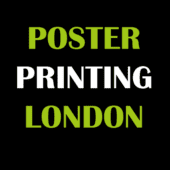Creating an Academic Poster in PowerPoint
Academic posters are a visual representation of research findings, often displayed at conferences or symposiums to communicate complex ideas in a concise and engaging manner. While designing an academic poster, it’s crucial to maintain clarity, coherence, and visual appeal. Here’s a step-by-step guide on how to create an academic poster using Microsoft PowerPoint:
1. Gather Content:
- Start by collecting all the necessary content for your poster, including text, images, graphs, and charts.
- Organize your content into sections such as Introduction, Methods, Results, Discussion, and Conclusion.
2. Choose a Template:
- Open PowerPoint and select a poster template that suits your needs. PowerPoint offers various predefined poster sizes, including standard options like A0, A1, or custom sizes.
- Alternatively, you can create a poster from scratch by setting the slide size according to your requirements.
3. Design Layout:
- Divide your poster into sections using text boxes and placeholders.
- Ensure a logical flow of information, with each section clearly labeled and easy to read.
- Leave enough white space to prevent overcrowding and maintain visual clarity.
4. Insert Text and Graphics:
- Copy and paste your written content into the designated text boxes. Use concise sentences and bullet points to convey key points.
- Insert relevant images, graphs, tables, and charts to illustrate your findings. Make sure they are high-resolution and clearly labeled.
5. Format Text and Graphics:
- Format text using a clear and legible font, such as Arial or Calibri, and ensure consistency in font size and style throughout the poster.
- Adjust the size and position of images, graphs, and other visual elements to fit the layout neatly.
- Use colors sparingly and strategically to highlight important information and maintain visual harmony.
6. Add Headers and Footers:
- Include a title at the top of the poster, along with the names of authors, affiliations, and contact information.
- Optionally, add headers and footers to each section for better organization and navigation.
7. Review and Edit:
- Proofread your poster carefully to check for spelling and grammatical errors.
- Ensure that all text and graphics are accurately aligned and properly formatted.
- Seek feedback from colleagues or mentors to improve the clarity and effectiveness of your poster.
8. Save and Print:
- Save your poster in a high-resolution format, such as PDF or JPEG, to preserve image quality.
- If printing locally, consult the printing guidelines provided by the conference or printing service to ensure compatibility and optimal results.
- Consider printing a small test version of your poster to check for any formatting issues before producing the final version.
Creating an academic poster in PowerPoint allows for flexibility and customization while leveraging familiar tools and features. By following these steps and paying attention to detail, you can design a professional and impactful poster to effectively communicate your research findings.
Conclusion: Designing an academic poster in PowerPoint requires careful planning, attention to detail, and creativity. By following the steps outlined above, researchers can create visually appealing posters that effectively communicate their findings to a diverse audience. Whether presenting at conferences, symposiums, or other academic events, a well-designed poster can enhance the visibility and impact of your research. With practice and feedback, researchers can refine their poster design skills and produce compelling visual representations of their work.
